One more (last?) column about the long-gone diesel truck
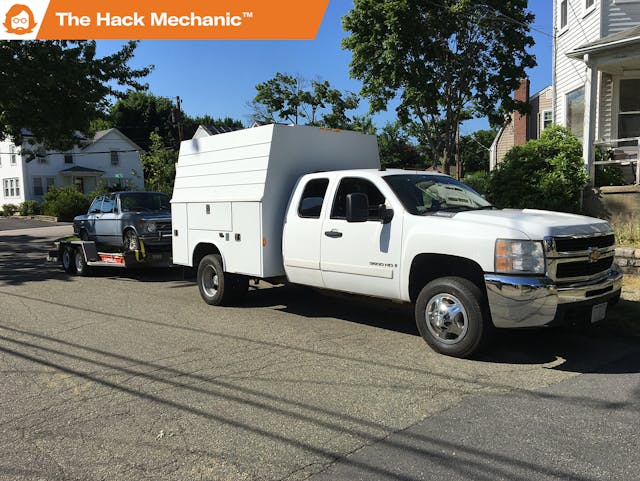
Having written about the purchase of the 2008 Silverado 3500HD duallie Duramax diesel, the de-mousing of the truck, the eventual sale of the truck, and missing the truck once it was gone, you wouldn’t think I could get another column out of it. And you’d be wrong. It’s like the truck equivalent of the Hanukkah menorah—it burned for not one article, but eight.
One last time for those in the cheap seats: I bought the 29,000-mile truck from my former employer when they largely abandoned it with a building closure. Mice had gotten into it and their excretory excesses in the truck’s headliner made for very dramatic photographs of its deteriorated condition. Since it was my former geophysics work vehicle, I knew bloody well what it was, but no one else left in my division of the company did—it was just a line on an inventory sheet for which they balked at paying monthly storage fees. So I made them an insanely low offer. They accepted it, I brought the truck home, largely de-moused it, and had the biggest, baddest tow-vehicle-stuff-mover on the planet.
But I never really used the truck the way I imagined. I towed a few of my own cars back and forth to storage with it but never used it to drop everything and run off, buy, and drag home a barn-find prize before someone else got it. It began to feel ridiculous owning a super-duty vehicle like this when most of its use was running cardboard boxes down to the local recycling depo, and its awful turning radius and low visibility from the wonderful-when-you-use-it-but-in-the-way-when-you-don’t utility body made it feel like using an assault rifle to hunt squirrels. Plus, the combination of the remnant rodent smell, the poor gas mileage, and the high cost of diesel meant that we never used it as a “family vehicle”—it only left the driveway if I needed to move something, which wasn’t often.
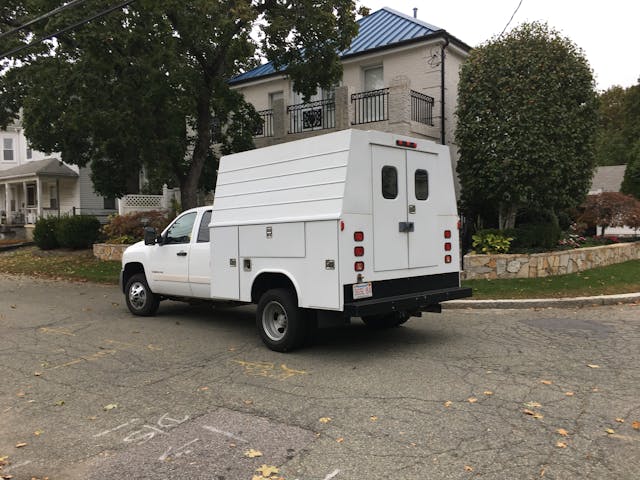
So I sold it. All in (purchase, taxes, tires, replacement of the stolen catalytic converter, and lift pump), I had maybe six grand in it, and I sold it for $30K. It is the only time in my life I’ve ever made windfall money on a vehicle. I don’t regret the decision one iota (my bank account thanked me profusely), but almost as soon as the truck was gone, I felt its absence, both in terms of hypothetical towing as well as not being able to do trivial things like run out and pick up a free Tempur-Pedic bed.
The surprising thing is the degree to which I’ve waffled on replacing it. I’m usually very surgical about this sort of thing. I analyze a need, make a decision, and act quickly on it, which generally translates into picking up the cheapest version of what’s available (hey, all this content doesn’t just generate itself). Initially I gravitated toward looking at Honda Ridgelines in the $4000 range, but then the whole thing ran into molasses.
It’s taken me a while to grok why I’ve been so slow on the uptake. I think I’ve got it figured out. And hence you get one more piece on my curious thought process.
Here’s the story. I’ve long joked that a car person needs seven cars. They are: Your daily driver, your spouse’s daily (which is also probably the family hauler), the pampered classic, the tow monster/beach truck, the track go-cart, the ragtop roadster for sunny Sundays, and whatever the current project car happens to be. Makes sense, right?
In truth, that slot for the tow monster/beach truck began as 100 percent beach truck. For almost 30 years, I took my family on a big beach vacation on Nantucket. You need a four-wheel-drive vehicle to reach the fishing spots on the peninsulas of Great Point and Smith Point, so I got into the habit of buying a beat-up Suburban in late spring (nothing comes close to the people-and-cargo-carrying capability of a seventh-generation ’Burb, though I did eventually roll into eighth- and ninth-gen vehicles), doing whatever maintenance was needed, taking it on vacation, selling it when it was over, and repeating the process the following year. Why not hold onto the truck year-round? Well, insurance costs money, driveway space was at a premium in those days, and selling one of our other cars was out of the question because neither my wife nor I wanted to daily-drive something that big. The realization that I could also use the Suburbans to tow came when my garage finally got built in 2006—I suddenly had both garage space and driveway space for more cars, and their numbers began their steady climb.
Not long after that, my old engineering job bought the Silverado 3500HD work truck, so if I was between Suburbans and needed to tow something, it was available for occasional loan. In later years, I did begin keeping a ‘Burb registered year-round and began to appreciate how useful it was if we needed to, say, go down to The Sears Outlet and buy a scratch-and-dent refrigerator, and obviously for smaller stuff-moving like buying Recaro seats or sets of wheels and tires.
The point is that I was never towing a travel trailer, nor was I a track junkie who had a dedicated need to tow a race car every weekend. The Suburbans could haul the U-Haul auto transporters with small to mid-size BMWs on them, and that was fine. I never evaluated my towing needs and went out and researched and purchased a dedicated tow vehicle—it was always either the works-fine Suburban beach vehicle or the borrowed massive-overkill work truck.
So, with that history, what is it that I want NOW? Is it another truck like the one I just sold—something specifically for towing cars and moving stuff and with mileage so low that it’s likely to be reliable for years? Having bought and then sold the Silverado, the odds that I’m going to find another duallie diesel tow monster—with less than 30K miles and a utility body that would hold three refrigerators—for $6000 are less than zero.
No, it isn’t that. If I wanted that, I wouldn’t have sold the truck.
Is it another Suburban, something that i can use to take eight people out onto soft sand and still have room for suitcases and coolers behind the third row seats? No, it isn’t that either. The big family beach vacations are long over. I have no need to haul that many people and cargo on sand or asphalt.
Or is it something more Swiss-army-knife-like, something I can use as a daily driver but also tow with? Maybe, but I tried that before—with the triple-unicorn 2004 BMW X5 six-speed with both the sport package and the tow package that I bought shortly before the pandemic, and I was glad when I sold it and went back to daily-driving my 2003 E39 530i sedan.
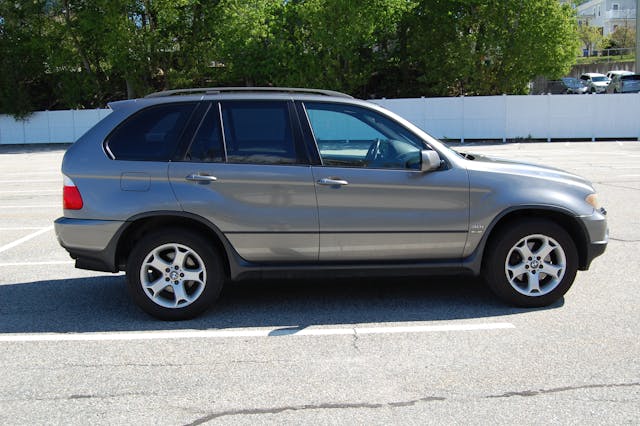
Although the X5 experiment failed, it was instructive to look back on what I wrote about buying it. I’d forgotten that one of the things that kicked off the purchase was this comment from my wife: “I miss having a Suburban. The stuff we used to be able to pick up in those things was great.” However, the last Suburban I owned had brake-line rot issues that plague late-1990s through mid-2000s Chevy trucks, and most of the cheap ’Burbs I looked at had the same problem. I briefly looked at inexpensive high-mileage Toyota Sequoia and Nissan Armada SUVs, but I found that they have the same frame and trailing arm rust issues as their Tacoma and Titan truck brethren.
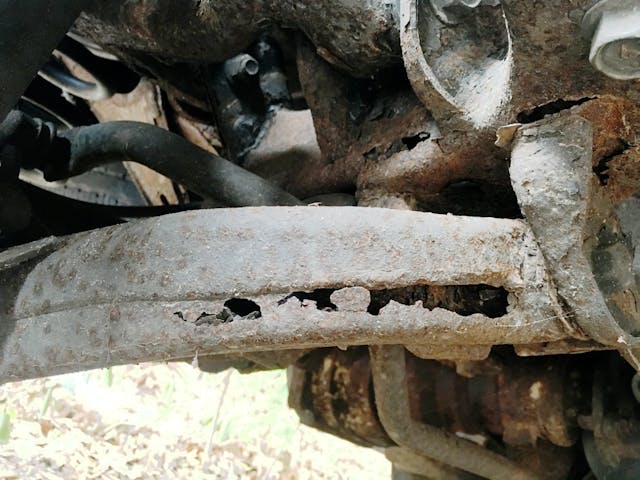
It was that combination of events that sent me to looking at BMW X5s. The V-8s 4.4-liter vehicles are better tow vehicles than the straight six 3.0s, but the sixes were available with a stick, though they’re rare. It was the lightning-strike event of finding a six-speed car that also had both the tow package and the sport package; its interior looked uncannily similar to my 530i. The car had 270,000 miles on it, but fact that it had lived most of its life in North Carolina and Florida, was about 10 miles from me, had had a ton of recent maintenance, and had a $4000 asking price got me to go see it. In person, it looked practically new inside and out, and I snagged it for $3300. In other words, the whole exercise was more “How can I pass up this cool vehicle at this price?” than it was a well-considered solution to a towing problem. Plus, at that point I still could borrow the work truck if I needed it.

If you look above, you’ll notice that what I considered, looked at, and bought were all SUVs. No pickups. That’s not accidental. I’m really not a truck guy. I don’t need a truck. I don’t have repeating needs to move dirt or bricks or gravel or construction debris or 4×8-foot sheets of plywood or drywall. The original vector into towing wasn’t a need to move stuff—it was a need to move people.
Once I understood why my focus on what could replace the Silverado 3500HD was cloudy, I began to think of it another way. My daily is the 530i, which is a rear-wheel drive vehicle. My wife’s is a front-wheel 2013 Honda Fit. Both cars are shod with snows on all four corners in the winter, and thus are fine, as we live in suburban Boston, not northern Vermont. If there’s an honest-to-goodness Biblical snow event (as opposed to the local weather report’s OH GOD RUN FROM THE KILLER SNOWSTORM hype), we wait to go out until our son has shoveled the driveway and the streets have been plowed. It’s not hardship. So on paper it’s a forced fit to say we should own a big tow-capable 4WD SUV so that we’d have something “safe” to drive in winter weather, much less gas one up year-round as a daily driver.
However, maybe the X5 experiment wasn’t a failure after all. I work from home, and my wife is retired, so we don’t have the commuting needs that might tip us toward a more all-weather-capable vehicle. However, my wife is a passionate quilter, and attends regular quilting and sewing events, including winter retreats up in New Hampshire. If a storm moves in, I would feel better with her driving something with 4WD (and yes, something larger than the little Honda Fit). If I bought a truck, she’d be unlikely to drive it, but a mid-size SUV? Maybe that’s the tack to take. Find something like a facelifted first-gen Toyota Sequoia. That’s small enough that she’d feel comfortable driving it, big enough to put stuff in without being Suburban-sized (let’s face it—I’m not muscling any more Sears scratch-and-dent refrigerators into and out of vehicles), and tow-capable without being a tow monster. Maybe I can thread the needle and find one without the frame rust, without crazy mileage on it, and in the same price bracket that the X5 was (I often joke that I do my best work around $4000).
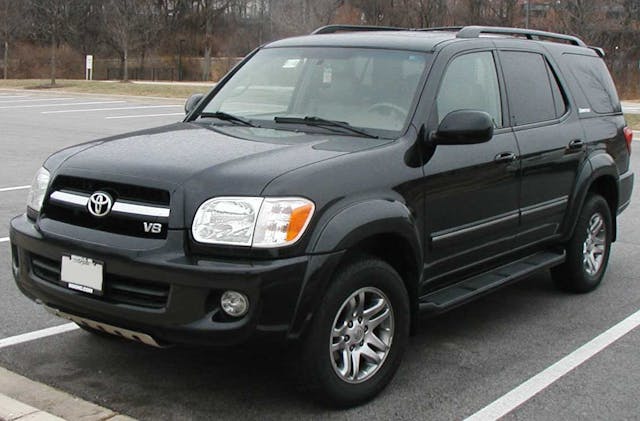
I’m a man with a plan. We’ll see how it plays out.
***
Check out the Hagerty Media homepage so you don’t miss a single story, or better yet, bookmark it. To get our best stories delivered right to your inbox, subscribe to our newsletters.


Plans are good. Plans make sense. Plans are practical. Plans give us guidance, direction, and control. Until, that is, while we’re following the plan, we fall in love with something that catches our eye that is impractical, nonsensical, and puts us totally out of control. Good luck with the plan, Hack. Oh, and Happy New Year to you and Mrs. Hack!
I had a plan. Go to the Toyota dealer, get a Corolla (grew up with Toyotas). On the Orlando dealer’s lot was a ’72 MG Midget. The failure of that plan led me down the long (and fun) road to this place.
You have a knack for writing about vehicles I primarily am not interested in and making me interested in your story. I would love to see you pick up something more of us Hagerty audience own or have owned, and something that is an entry point to the hobby.
Cheap, common, abused, loved, capable, not overly complicated, but not fully archaic either: this leads me to the GMT400 platform. For your purposes specifically a regular cab 4×4 shortbox (fleet or step, whatever you can get).
Put a hard tonneau cover on it and you can haul enough quilt stuff or tools (unless the visibility loss of a cap doesn’t bother you and the wife). Being shortbox they are easy to park but still have grunt. Probably still good for towing light things? –but you repeatedly admit you don’t do that much towing.
The used parts interchangeability 88-94, 95-98 (and later for the bigger trucks that used this sheetmetal) is full of odd knowledge that should be shared. Many of these trucks “doesn’t start, replaced fuel pump, filter, etc.” and it is a relay on the firewall people don’t think of. If you get a nice enough one cheap enough there is flip potential.
The content potential is huge… headlight style swap, LED headlight upgrade, GMC to Chev grill swap, the variations in front bumpers and the popularity of the diesel bumper swap traditionally… as a working on it to make content project you would get years of content just investing the things people did or do to these things (old school 4/2 lowering without airbags why to do it, why to remove it…) even how to make it survive as an old regular-use vehicle. I think it could be a great series here.
I’d love to see you take a couple terrible examples and build a Frankenstein the naysayers have to say “well that turned out nice”.
Honorable mentions would be 90s F150, the 94-2001 Rams (eventually going to be a popular classic –the Cummins ones are already silly money) and any SUV on these platforms. Rather than Ridgeline (though actually interesting to me) cast back a bit farther to the actual “small” trucks like S10, Ranger, Hardbody, Hilux/early Tacoma –both my best high school friends drove Mazda B2200’s though that predated the 4×4 is everywhere fad.
Plan on rust in the Toyota. So very common.
Jave you considered a 4Runner. 2 or 4 wheel drive.
Tough, capable not hige.
A relatable entry point vehicle… Cheap, common, abused, loved, capable, not overly complicated, but not fully archaic either: this leads me to the GMT400 platform. For your purposes specifically a regular cab 4×4 shortbox (fleet or step, whatever you can get).
Put a hard tonneau cover on it and you can haul enough quilt stuff or tools (unless the visibility loss of a cap doesn’t bother you and the wife). Being shortbox they are easy to park but still have grunt. Probably still good for towing light things? –but you repeatedly admit you don’t do that much towing.
The used parts interchangeability 88-94, 95-98 (and later for the bigger trucks that used this sheetmetal) is full of odd knowledge that should be shared. Many of these trucks “doesn’t start, replaced fuel pump, filter, etc.” and it is a relay on the firewall people don’t think of. If you get a nice enough one cheap enough there is flip potential.
The content potential is huge… headlight style swap, LED headlight upgrade, GMC to Chev grill swap, the variations in front bumpers and the popularity of the diesel bumper swap traditionally… as a working on it to make content project you would get years of content just investing the things people did or do to these things (old school 4/2 lowering without airbags why to do it, why to remove it…) even how to make it survive as an old regular-use vehicle. I think it could be a great series here.
I’d love to see you take a couple terrible examples and build a Frankenstein the naysayers have to say “well that turned out nice”.
Honorable mentions would be 90s F150, the 94-2001 Rams (eventually going to be a popular classic –the Cummins ones are already silly money) and any SUV on these platforms. Rather than Ridgeline (though actually interesting to me) cast back a bit farther to the actual “small” trucks like S10, Ranger, Hardbody, Hilux/early Tacoma –both my best high school friends drove Mazda B2200’s though that predated the 4×4 is everywhere fad.
A couple years ago I got tired of my 1999 Silverado 2WD and did a similar downsizing. The truck was still pretty much flawless at 245k miles, and served faithfully, but it was just too damn big. Plus, like you, I found that I was rarely towing anything or using the available load capacity.
After a lot of similar analysis, I decided on a 1995 Mercedes Benz E320 wagon, and haven’t looked back. It’s built like a tank, carries a ton of stuff, and is wonderful on long trips –I just drove Seattle to Portland to pick up an E30 differential, and it was rock solid at 75mph. Decent mileage, too. And, unlike my truck, it’s fun to drive.
These cars are available out here in Seattle for pretty much chicken feed–I paid $4k for mine. I’ve had to fix a couple of minor problems, but overall, for a parts-getter that also looks fine at a nice restaurant, it’s been great.
I don’t need a truck.
I just spent some time driving a friend’s X5 diesel this weekend. I was prepared to not like it at all, but i enjoyed driving it way more than I thought I might. Plus it held quite a large amount of stuff.
Geez Rob–I do have seven vehicles too! Pretty much per your list but an 04 Denali we bought new is the winter beater. And yes I already paid $3K three winters ago to have the rusted mass of brake lines–and all the brakes–replaced. If not for the tin worm it would run forever. Have a nice 15 F350 that I don’t really need but is great to have. Don’t have a project at the moment in cars–do in snowmobiles! My wife’s 03 Arctic Cat Cougar identical to the Ann Margret sled in Grumpy old Men! Wifey has the fur hat too…..Happy New Year!
Your conundrum mirrors mine. I argue between a tow capable daily and just having an available rig while I drive something else.
My commute is about 22 miles round trip, so fuel isn’t a massive concern. However, with a toddler in the house and the fact that we live rural means I need reliability.
With a U-Haul auto transport weighing in at 2300lbs empty, slapping my 300SDL on a trailer (3800-4100lbs depending on what you read online) means I need north of 6k on capacity.
I used pandemic equity to unload my ’18 F150 for a paid-off ’16 sorento and discovered I loathe crossovers. So the sorento needs to go. The question is, new car and a beater tow rig? Or something like a new tacoma/ranger/GM twin? I’m a truck guy and I hate lobbing greasy car parts in to the trunk of a carpeted SUV.
Yes, I’ve done the same need-6000-lbs-towing-capacity calculation.
Have you never heard of renting ?
Yes, but the $1.50/mile for the U-Haul truck adds up quickly. Renting only makes sense to me if I had absolutely zero need for a medium-to-large V8 SUV (or pickup) otherwise. I DO have such a need, but the vehicle would only be used occasionally. Thus it’s a question of finding the right vehicle at the right price. If the only option was spending upwards of ten grand, then yes I’d rent.
My dad always owned a big pickup truck to tow his RV, and I learned a lesson: pickup owners never lack for friends – or at least people you vaguely recall meeting somewhere a long time ago who want to borrow the truck for an afternoon. Or a couple of days. And who never seem to remember that they promised to put gas in it. Oh and by the way they need help to move the grand piano and pool table out of the basement to their new location in their cousin’s third floor attic? I’m pretty sure they’ll fit. The best one was the guy who borrowed my dad’s truck for an afternoon, and when he hadn’t returned it that night, told my dad that he had lent it to someone else who promised to return it.
And the really annoying part of all this was that I had to wait in line behind all these people when I wanted to borrow the truck!
RIP dad, thanks for everything… including let me borrow the truck even though I ran it into a ditch as a teenager.
I have had three GLE 350 Mercedes (2013, 2016, 2024) with great success. They replaced the pickup truck that I despised driving on a daily basis. They ride very well, they are quiet, they get 20MPG on average, you can put someone you actually like in the back seat, and they tow 7000 pounds. They were all extremely reliable. The new one is actually sporty to drive. I know this does not meet your $4000 budget, but an older one might be cheap enough.
Wow, an X5 in manual?! As a committed E61 stick-shift owner, I am feeling this.
I was shopping newer X5’s recently, and discovered they have a 3-row option apparently, that has got me thinking …
The Toyota Sequoia is a good choice.
I don’t understand all the gnashing of teeth on this subject. What everyone needs is a good minivan. My 2006 Sienna will tow 3,500lbs and carry 7 people and it drives like a Camry I can put 4 X 8 sheets in it and is very cheap to keep and when the rare occasion it has an issue its a easy and cheap repair. I have 277,000 miles on it. its got very comfy seats. We have done 18 years of family trips in it. I still get 24mpg on the hwy. The V6 has plenty of power. So it just comes down to vanity why people dont universally embrace them. The only other issue might be snow but you even say its Boston not Vermont. So Meh. They do everything you are looking for cheaper and more reliably with more room then any SUV on the market. Plus I think it has lis 24 cup holders! My 2 cents. They are UUV’s (Ultra Utility Vehicles)
After selling the travel trailer I pulled with a Chevy dually it was decided we didn’t need the truck (2019 3500 WT) so we sold it too, with only 28k miles on it after five years of ownership. Every time I think I miss it, I think about the fact that I sold it for the same amount I paid for it new in 2018.
I’m still trying to figure out how to get several bags of mulch in a WRX though….
Once you own a truck…….you will go through withdrawal until you own another. My favorite driver/beach cruiser/ dog carrying/ work car / hot rod (with some suspension, exhaust, wheel/tire mods
the 94-96 Buick Roadmaster, Chevrolet Caprice wagons but they have gone ballistic in prices. With the mods they were an Impala SS wagon. Short bed regular cab trucks have all gone stupid in pricing. Best bet is still a Suburban or a smaller Tahoe.
I stick with the ’91-93 wagons with TBI.
Prices are way more reasonable than the later LT1’s, much easier to fix, and the ongoing maintenance issues with the LT1 aren’t worth the extra fare to own.